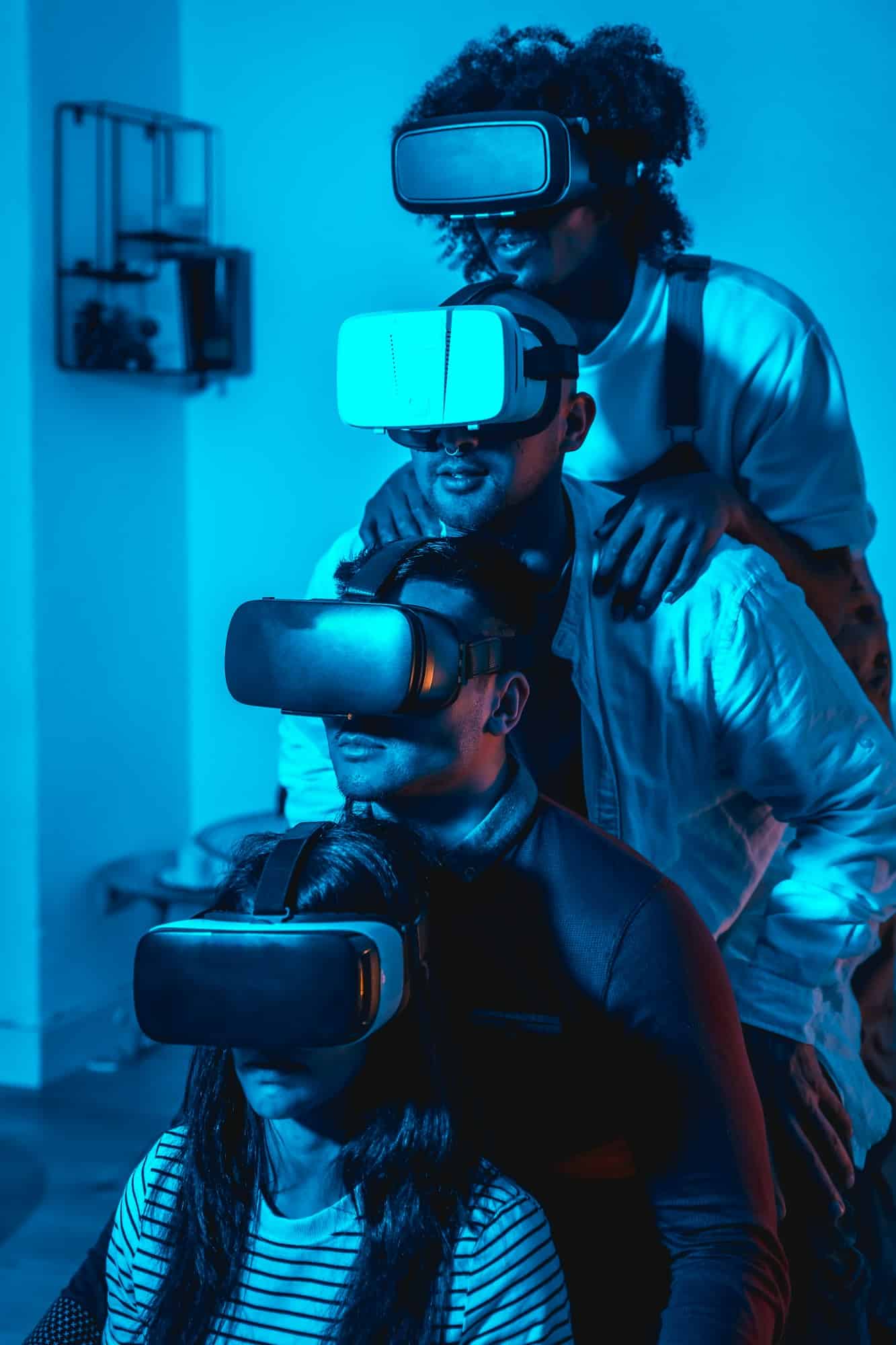The world of technology continues to revolutionize the way we live and work. In the business world, training is one area that has seen significant technological advancements. With the advent of virtual reality (VR), companies can now provide immersive learning experiences, transforming how employees acquire new skills.
The Realities of Virtual Reality in Employee Training
Virtual reality, a technology that simulates a three-dimensional, computer-generated environment, is no longer confined to the realms of gaming and entertainment. It has found its way into the corporate world, particularly in the realm of employee training and development. By donning a VR headset, employees are transported into a digital environment where they can learn and practice new skills in a safe, controlled setting.
A voir aussi : How to build a high-performing sales team
Virtual reality training offers an interactive and engaging learning experience that surpasses traditional training methods. Employees are not just passive recipients of information but active participants in their own learning process. They can manipulate virtual objects, perform tasks, and make decisions, all within the VR environment. This active learning approach is known to improve retention and comprehension rates, as it appeals to various learning styles.
The Cost and Time Benefits of Virtual Reality Training
Adopting virtual reality for employee training can yield significant cost and time benefits for businesses. From a cost perspective, VR training eliminates the need for physical training materials and venues, which can be expensive to maintain. It also cuts down on travel expenses if employees are spread across different locations.
A découvrir également : What Are the Most Effective Loyalty Program Strategies for UK Retailers?
In terms of time, virtual reality provides a more efficient training solution. Traditional training programs often require substantial time investment from both the trainers and the trainees. With VR, employees can learn at their own pace, revisit sections they find challenging, and practice as often as they need without the pressure of a group setting. This personalized approach shortens the learning curve and allows employees to apply their new skills sooner.
The Role of Virtual Reality in Skills Development
In today’s fast-paced business environment, continuous skills development is essential for staying competitive. Virtual reality can facilitate this by providing a realistic platform for skills practice and reinforcement.
Through VR, employees can gain hands-on experience in a variety of scenarios that might be difficult, costly, or risky to replicate in real life. For instance, employees in high-risk industries such as construction or healthcare can practice safety procedures in a virtual environment, reducing the risk of accidents during actual operations. Similarly, sales representatives can hone their pitching skills by interacting with virtual customers.
Moreover, VR training can be tailored to individual learning needs. With its ability to track performance and provide immediate feedback, employees can identify their strengths and weaknesses, and focus on areas that need improvement.
Virtual Reality and the Future of Employee Training
As virtual reality technology continues to evolve, so too will its applications in employee training. The immersive nature of VR makes it an ideal platform for experiential learning, where employees can learn by doing, rather than just listening or reading.
Current advancements in VR technology, like haptic feedback, are set to enhance the sensory experience of virtual training. By incorporating tactile sensations, employees can feel the texture of virtual objects and receive physical feedback on their actions. This enhancement will make the virtual training more realistic and effective.
In summary, virtual reality offers a promising solution for businesses seeking to improve their employee training programs. By leveraging this technology, companies can provide immersive, engaging, and efficient learning experiences that boost employee skills and productivity. While the initial cost of VR equipment and software may be high, the long-term benefits in terms of enhanced learning outcomes and operational efficiency make it a worthwhile investment.
Keeping Human Factor in Mind while Using Virtual Reality for Training
While the promise of virtual reality for training is undeniable, it’s crucial to remember the human factor. Not everyone is comfortable with technology, and some may experience physical discomfort or disorientation when using VR. Therefore, it’s important to ensure that employees are given adequate time to acclimatize to the virtual environment and that the training materials are designed with user comfort in mind.
Moreover, VR should not replace human interaction entirely. Feedback, discussion, and collaboration are critical components of the learning process that can’t be fully replicated in a virtual environment. Therefore, VR should be viewed as a complement to, rather than a replacement for, traditional training methods.
Embracing virtual reality for employee training is not just about adopting a new technology. It’s about creating a culture of continuous learning and innovation. By integrating VR into your training strategy, you are showing your employees that you are committed to their personal and professional development, which in turn, can boost their motivation and job satisfaction.
The Intersection of Virtual and Augmented Reality in Training Programs
The immersive nature of virtual reality (VR) provides a strong foundation for impactful employee training. However, for some businesses, introducing augmented reality (AR) into the mix can turn an already robust training program into an even more effective tool.
Augmented reality differs from virtual reality in that it infuses digital elements into the real world, rather than creating an entirely new environment. This blend of real and virtual can be particularly beneficial in training scenarios where the context of the real-world setting is crucial, such as in safety training or in the case of equipment operation.
Imagine a scenario in which an employee dons an AR headset during a safety training course, seeing their actual surroundings but with overlaid digital elements demonstrating potential hazards. This not only reinforces the theoretical knowledge but also gives the employees a chance to apply it in a realistic, yet risk-free setting.
Moreover, AR can facilitate soft skills training as well. For example, customer service representatives can interact with augmented reality customers, simulating real-life interactions and receiving instant feedback on their performance.
Like VR, AR also offers cost savings due to the reduced need for physical training materials and venues, and the ability to conduct training programs regardless of the trainees’ physical location.
Creating Engaging and Comprehensive Training Experiences with VR
Beyond the cost-effectiveness and practicality of VR training, there’s the undeniable benefit of creating truly immersive learning experiences. Traditional training methods often struggle to maintain employee engagement, but the interactive nature of virtual reality training captivates employees, promoting heightened focus and retention.
With VR, training can become more experiential rather than purely instructional. Employees aren’t just learning about a process, they are virtually performing it. This "learn by doing" approach is far more likely to stick with the trainees, enabling them to recall and apply what they’ve learned when it matters most.
The opportunity to repeat and practice procedures or tasks within the VR environment also means that employees can gain proficiency and confidence before they face the real-life scenario. This can be particularly beneficial in high-stakes industries such as healthcare or construction, where mistakes can have serious consequences.
Conclusion
There’s no disputing the transformative potential of virtual reality in the realm of employee training. From more engaging and effective training experiences to significant cost savings, the benefits are substantial. However, as with any technological advancement, it’s essential to keep the human factor in mind and ensure that it complements rather than replaces the valuable aspects of traditional training methods.
Combining VR with augmented reality can create an even more comprehensive and contextually rich training program, allowing employees to interact with digital elements within their actual environment.
While the initial investment in VR and AR technology and software may seem daunting, the long-term gains in employee proficiency, safety, and productivity make it a worthy investment. As such, businesses looking to innovate their training programs and foster a culture of continuous learning and development should seriously consider the potential of these immersive technologies.





